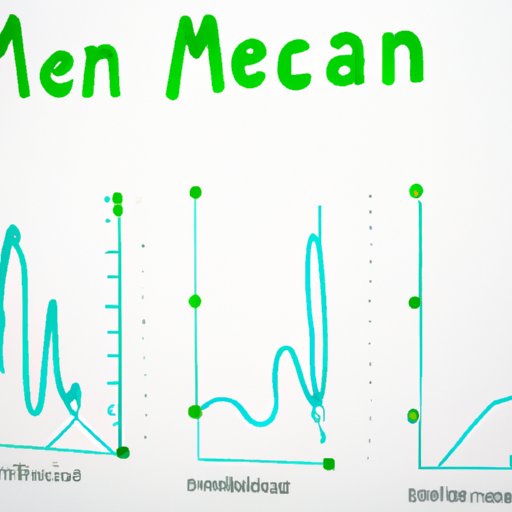Introduction
The term “mean” is commonly used in everyday language, but it also has an important role in science. The scientific definition of mean is slightly different than its everyday usage, and understanding this difference is essential for accurately interpreting and utilizing data in scientific experiments and research. This article will explore the meaning and uses of mean in science, from its definition to its role in data analysis.
Exploring the Meaning of ‘Mean’ in Science
When discussing science, the term “mean” refers to a type of average. It is a way of summarizing a set of data by calculating the central value in a dataset. This can be done by adding together all of the values in a dataset and then dividing that sum by the total number of values. In mathematics, the mean is typically represented by the Greek letter μ (mu).
Different Types of Mean in Science
There are several types of mean that are used in science. These include the arithmetic mean, geometric mean, harmonic mean, and weighted mean. Each of these types of mean is calculated differently and is used for different purposes. For example, the arithmetic mean is the most commonly used type of mean, and it is used to calculate the average of a set of numbers. The geometric mean is used to measure the rate of growth or decay in a set of numbers, while the harmonic mean is used to calculate the average of ratios. The weighted mean is used to give more importance to certain values in a set of numbers.
How to Calculate the Mean in Science
Calculating the mean in science requires following a few basic steps. First, the data must be collected and organized into a set. Then, the sum of all of the values in the set must be calculated. Finally, the sum must be divided by the total number of values in the set. This will give the mean of the data set.

Examples of Calculating the Mean
To illustrate how to calculate the mean, consider the following example. Suppose there is a set of five numbers: 2, 4, 6, 8, and 10. The sum of these five numbers is 30. To calculate the mean, divide the sum (30) by the total number of values (5). This gives an answer of 6, which is the mean of the set.
Understanding Statistical Mean in Science
In addition to the mean discussed above, there is another type of mean known as the statistical mean. The statistical mean is used to estimate the population mean when only a sample of the population is available. It is calculated using the same method as the mean discussed above, but it also takes into account the variance in the sample. The statistical mean is typically represented by the Greek letter Χ (chi).
Applications of Statistical Mean
The statistical mean is often used in experiments and research studies to calculate the average of a sample population. For example, it can be used to calculate the average age of a group of people or the average income of a group of households. It is also used to help draw conclusions about the larger population by comparing the sample mean to the population mean.

Applying the Mean in Research and Experiments
The mean is used in many types of research and experiments. It can be used to compare groups of data or to analyze the results of an experiment. In research studies, the mean is used to determine the average effect of a particular treatment or intervention. In experiments, it is used to measure the average response of participants to a certain stimulus.

The Role of Mean in Scientific Studies
Mean is a powerful tool for understanding scientific data. It can be used to measure the average value of a variable and to compare different groups of data. Additionally, it can be used to identify patterns or trends in data sets, such as changes over time or differences between groups. Mean is also used to make predictions about future outcomes based on past data.

Using Mean to Analyze Data in Science
Mean can be used to analyze data in a variety of ways. By calculating the mean of a data set, researchers can identify outliers or unusual values. They can also use the mean to compare the average values of different groups of data or to test hypotheses. Additionally, mean can be used to develop new hypotheses by looking for correlations between variables.
Comparing the Mean to Other Statistical Measures in Science
The mean is just one of many statistical measures that are used in science. Other common measures include the median, mode, and range. Each of these measures has its own advantages and disadvantages, and they should be used in combination to get the most accurate results. For example, the median is more resistant to outliers than the mean, while the range is better at measuring variability.
Conclusion
In conclusion, the term “mean” has a specific scientific definition that is distinct from its everyday usage. Mean is an important tool for understanding and analyzing scientific data, and it can be used to measure the average value of a variable, compare different groups of data, and develop hypotheses. There are several types of mean, including the arithmetic mean, geometric mean, harmonic mean, and weighted mean. Additionally, the statistical mean can be used to estimate the population mean when only a sample of the population is available. Understanding the meaning and uses of mean in science is essential for accurately interpreting and utilizing data in scientific experiments and research.
(Note: Is this article not meeting your expectations? Do you have knowledge or insights to share? Unlock new opportunities and expand your reach by joining our authors team. Click Registration to join us and share your expertise with our readers.)
